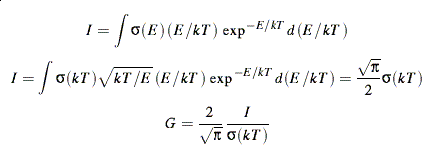|
In the thermal reactor business, quite a bit of insight into the
behavior of a particular evaluation can be obtained by examining
certain thermal cross sections and resonance integrals. In a
reactor, most fission neutrons are born from fission reactions
at thermal energies. The quantities of interest there are the
fission cross section itself, the competing capture cross section,
and the number of fission neutrons produced per reaction, nu-bar.
The deviation of the shape of the cross sections from a 1/v
shape is also of interest. The fission neutrons are produced at
energies up around 1 MeV, and they have to slow down to thermal
energies before producing more neutrons to continue the chain
reaction. The quantities of interest here are the fission and
capture resonance integrals, which help determine the probability
that a neutron will disappear before reaching thermal energies.
For these reasons, the following simple parameters have come into
wide use:
- fission cross section at thermal
- fission nu-bar at thermal
- capture cross section at thermal
- thermal Maxwellian fission integral
- thermal Maxwellian capture integral
- fission g-factor (deviation from 1/v)
- capture g-factor
- thermal alpha integral
- thermal eta integral
- thermal K1 integral
- fission resonance integral
- capture resonance integral
The conventional thermal energy is 0.0253 eV. If the cross section
has a 1/v shape, its integral weighted against a Maxwellian
spectrum for 0.0253 eV is given by

where the factor G provides a measure of the deviation from
a 1/v shape. It will be unity for a pure 1/v.
Similarly, the alpha, eta, and K1 integrals are Maxwellian
averages of the following quantities:



The quantity K1 is known to be an especially good indicator
for keff. The following is an example for
U-235 from Release 3 of ENDF/B-VI:
|



